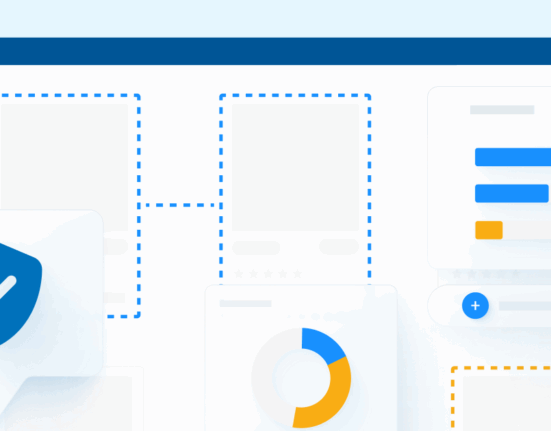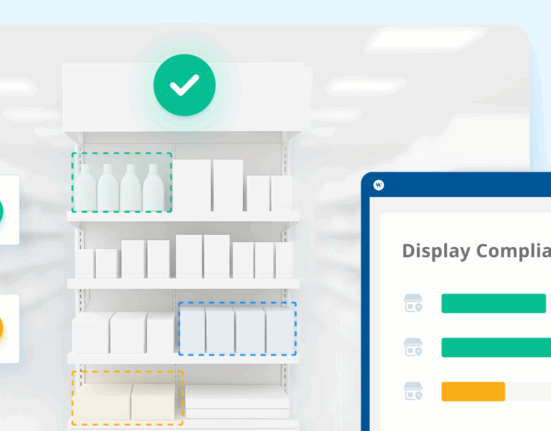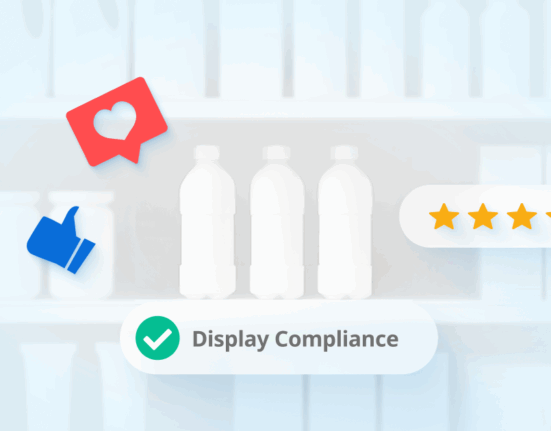In the competitive world of retail, ensuring your products are in the right place at the right time can mean the difference between profit and loss. This is where planogram compliance comes into play.
A planogram is a visual diagram that details where every product on a retail store shelf should be placed. Its main aim is to maximize sales and minimize wasted space. It’s a strategic roadmap for retailers, guiding them on how to arrange products in a way that boosts consumer engagement and ultimately leads to increased sales.
However, creating a planogram is only half the battle; the other half is ensuring its compliance. Planogram compliance refers to how well stores adhere to the planogram. Are the products arranged correctly? Are the shelves well-stocked? Is the allocated shelf space being properly used?
These are the questions that drive planogram compliance.

Common Issues With Planogram Compliance
One issue that brands often see when it comes to planogram compliance is inconsistent implementation across various store locations. Due to different store layouts and available shelf space, there can be discrepancies in the execution of planograms, rendering the same product’s presentation inconsistent across different shops. This inconsistency can lead to confusion for the customer and may negatively impact the brand’s image.
Another significant challenge is ensuring timely execution of planograms. There’s often a lag between the time a planogram is created and when it’s implemented in-store. This time delay can lead to potential out-of-stocks and missed opportunities for sales. In addition, seasonal or promotional items that are not set up in time can result in lost sales and excess inventory that may need to be marked down, affecting your bottom line.
Strategies for Monitoring Planogram Compliance
Monitoring planogram compliance is a crucial aspect of retail operations, ensuring that products are displayed in a way that maximizes sales and enhances the customer experience. There are several strategies brands can adopt to ensure their planograms are executed correctly, such as:
No. 1: Regular Audits
Conducting regular in-store audits allows brands to physically verify that stores are adhering to the planned layouts. This can be done by store employees or third-party auditing firms.
No.2: Digital Imaging
Brands can employ digital imaging technology coupled with machine learning algorithms to analyze the shelf arrangement and compare it to the planogram. This not only saves time but also increases the accuracy of compliance checks.
No.3: Employee Training
Regular training programs for retail staff can instill the importance of planogram adherence, enabling them to understand and comply with the brand’s merchandising guidelines.
No.4: Planogram Simplification
Keeping planograms simple and easy to understand can boost the likelihood of them being implemented correctly. The more complicated the instruction, the more likely a store employee is to make a mistake or arrange something incorrectly.
By implementing these strategies, brands can ensure their product display aligns with their strategic goals, leading to improved store operations and increased sales.

Retail Intelligence Software
On top of the previously mentioned strategies, there is another option that many brands may find particularly helpful—Retail Intelligence Software.
With software like Wiser’s Retail Intelligence, brands are equipped with the necessary tools to accurately monitor planogram compliance. It allows for a real-time visualization of store shelves, enabling brands to ensure that their products are displayed correctly and according to the agreed planograms. Any deviation from the planogram can be quickly detected, facilitating timely corrective measures.
With retail intelligence software, brands can also monitor the compliance of their competitors. This enhanced visibility can provide valuable insights into competitor strategies, including their planogram planning, shelf placement, product arrangement, and promotional activities. Understanding these aspects can empower a brand to tailor its own planogram strategy to effectively compete on the retail front.
One of the major advantages of retail intelligence software is its data analytics ability. The software can analyze the collected data to identify trends and patterns, which can be instrumental in informing future planogram strategies. This includes identifying which product placements lead to increased sales, which displays attract more customer attention, and how seasonal changes affect product performance.
Furthermore, retail intelligence software can foster an improved relationship between brands and retailers. By ensuring planogram compliance, brands can demonstrate their commitment to maintaining a tidy and well-organized store shelf, which can help cultivate a positive relationship with retailers. This mutual understanding can lead to more opportunities for product promotion and placement within the store.
Monitoring planogram compliance is a crucial aspect of retail operations, ensuring that products are displayed in a way that maximizes sales and enhances the customer experience.
The Imperative of Planogram Compliance
Effectively monitoring planogram compliance is not just a task, but a strategic imperative for any retail business. By ensuring products are displayed as planned, retailers can optimize sales, enhance customer experience, and streamline inventory management. Technological advancements, such as retail execution software, can greatly simplify this process by providing real-time visual confirmation and analytics back to the brand manufacturer.
However, technology alone is not enough. It is crucial to instill a culture of compliance within the retail team. Regular training sessions, clear communication of planogram strategies, and a system of accountability can motivate employees to adhere to planogram guidelines.
Finally, it’s important to remember that planograms are not a set-it-and-forget-it strategy. Market trends, customer behavior, and product performance are dynamic. Therefore, regular review and adjustment of planograms in response to these factors is necessary.
Visit Wiser.com today to learn more about Shelf Intelligence.









